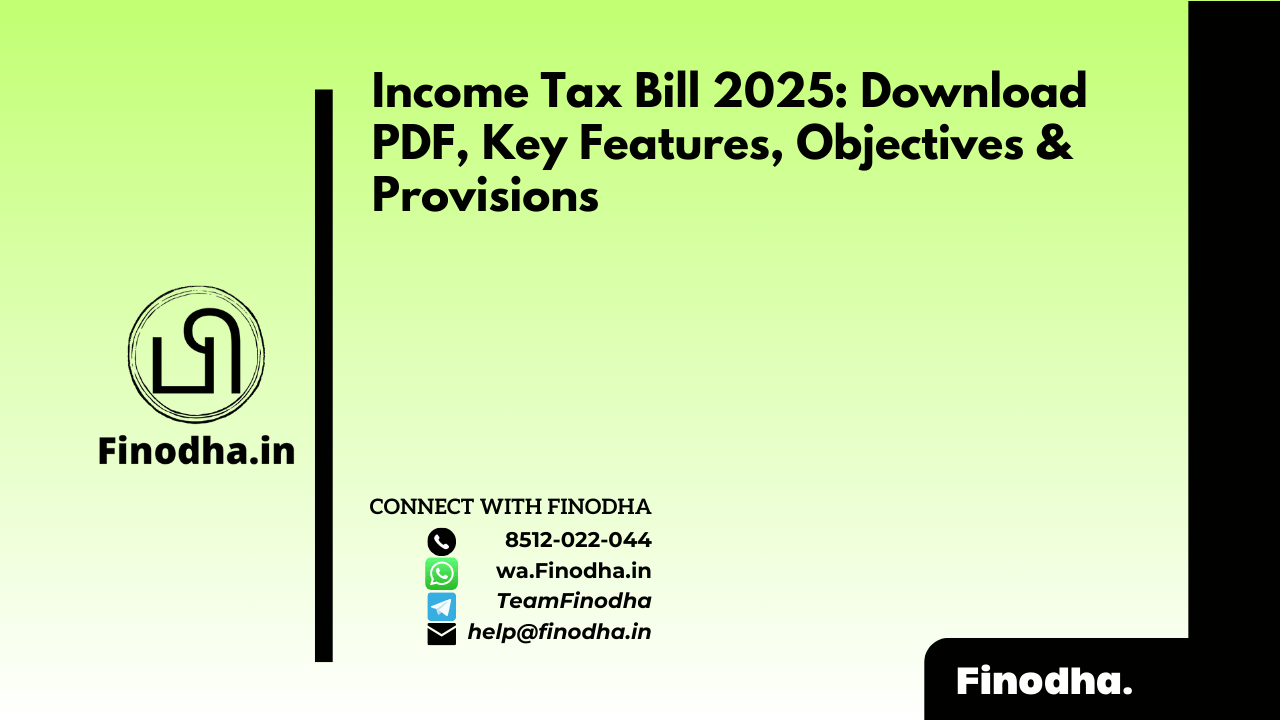Important Keyword: Green Levy, Corporate Sustainability, Carbon Tax, Environmental Responsibility.
Table of Contents

Introduction to Green Levy
The green levy is an emerging concept aimed at driving environmental responsibility among corporations by imposing charges on activities that contribute to carbon emissions. This initiative is rooted in the recognition of the pressing need to mitigate climate change and its associated impacts. Through the implementation of the green levy, governments strive to create a financial incentive that encourages companies to adopt eco-friendly technologies and sustainable practices. By placing a cost on carbon emissions, the levy stands as a pivotal tool in the global transition towards a low-carbon economy.
In essence, the green levy functions as a means of internalizing the environmental costs that businesses often overlook. Traditionally, companies operating in carbon-intensive sectors have had minimal financial motivation to alter their operational practices. With the introduction of the green levy, organizations are prompted to rethink their strategies; they must explore innovative solutions to reduce their carbon footprint. This financial mechanism aligns corporate interests with environmental well-being, making it increasingly economically viable for businesses to invest in cleaner alternatives.
Furthermore, the significance of the green levy extends beyond economic incentivization. It fosters a competitive landscape where companies that prioritize sustainability outperform their less environmentally-conscious counterparts. As consumers increasingly favor brands committed to social responsibility, those adopting environmentally-responsible practices and technologies are likely to gain a competitive edge in the marketplace. Consequently, the green levy serves as both a catalyst for change within corporate structures and a benchmark for measuring progress towards sustainable development goals.
In summary, the green levy plays a crucial role in promoting eco-friendly technologies among businesses, serving both as an economic incentive and a driver for corporate responsibility. Its implementation marks a significant step towards fostering a culture of sustainability across industries, ultimately contributing to a more responsible and environmentally conscious future.
What is the Green Levy?
The Green Levy is a pivotal regulatory measure that functions as a tax imposed on corporations and enterprises to promote environmentally sustainable practices. The primary objective of this levy is to incentivize businesses to adopt greener technologies and minimize their carbon footprints. By imposing this tax, governments aim to ensure that companies incorporate environmental costs into their economic calculations, ultimately contributing to broader efforts of combating climate change and protecting natural resources.
This levy operates on the fundamental principle that pollution should come at a cost, prompting corporations to reassess their operational practices. The Green Levy can take various forms, including taxes specifically targeting fuel-inefficient vehicles. These taxes are designed to discourage the use of gas-guzzling automobiles, promoting the transition to more environmentally friendly transportation alternatives. Such initiatives not only reduce greenhouse gas emissions but also encourage innovation in the automotive sector as manufacturers strive to develop fuel-efficient models.
Moreover, the Green Levy often extends beyond direct taxation; it may include other regulatory measures such as carbon trading systems or mandatory reporting of emissions. These frameworks can compel corporations to take actionable steps toward sustainability by holding them accountable for their environmental impact. In recent years, many countries have implemented some form of this levy, showcasing its growing popularity as a tool in the global fight against climate change.
Overall, the Green Levy represents a significant shift in how corporations approach environmental responsibility. By integrating ecological costs into their business strategies, organizations are not only contributing to environmental conservation but are also positioning themselves competitively in a market that increasingly values sustainability.
Factors Influencing the Green Levy
The implementation of the Green Levy is influenced by a multitude of factors, primarily centered around environmental, economic, and social considerations. One of the primary roles of the Green Levy is to act as a form of compensation for carbon footprints, thereby incentivizing businesses and individuals to adopt more sustainable practices. By imposing a financial charge on entities that significantly contribute to carbon emissions, the levy seeks to internalize the environmental costs of fossil fuel consumption and encourage a transition towards greener energy sources.
Additionally, the taxation of electricity and petroleum plays a crucial role in the structure of the Green Levy. These taxes are typically levied on energy consumption and production, reflecting the environmental impacts associated with these resources. This approach not only aims to reduce the dependency on fossil fuels but also promotes investments in renewable energy technologies. Higher taxes on conventional energy sources can lead to increased operational costs for businesses that rely heavily on these resources, thereby prompting them to explore alternative, eco-friendlier options.
However, the imposition of such levies does not come without consequences. Consumer prices are likely to be affected as companies may pass on the additional costs associated with the Green Levy to consumers. This could disproportionately impact lower-income households, which may struggle to absorb the increase in utility costs. Consequently, there are socio-economic implications to consider when discussing the Green Levy’s structure and execution, as the effects vary among different demographics. Some groups may find it challenging to adapt to these financial adjustments, while others, particularly those who can afford to invest in green technologies, may benefit from long-term savings and incentives.
The Role of Carbon Taxes in Green Levy
The implementation of carbon taxes under the Green Levy framework plays a significant role in promoting sustainable practices among businesses. Carbon taxes function as financial charges imposed on companies based on their greenhouse gas emissions, aiming to incentivize reductions in carbon footprints. By making carbon emissions a financial liability, governments effectively encourage organizations to transition towards cleaner energy sources and improve sustainability efforts.
For instance, in Canada, the federal carbon pricing system assesses a fee per ton of carbon dioxide emitted. This system mandates that businesses either pay the ensuing fees or adopt measures to lower their emissions. The funds collected from these taxes are often reinvested into green projects or returned to citizens and businesses, thereby creating an ecosystem where sustainability is both a requirement and a beneficial choice. The transparent mechanism not only promotes environmental responsibility but also stimulates innovation and competition among businesses striving to develop eco-friendly technologies.
Similarly, Germany’s approach to carbon taxation underscores the nation’s commitment to environmental sustainability. The country has implemented a sector-specific carbon pricing system that covers emissions from heating and transportation. By setting clear carbon pricing thresholds, German companies are prompted to invest in renewable energy and energy-efficient practices. The revenues generated from such taxes are utilized to enhance renewable energy infrastructure and support households in transitioning away from fossil fuels.
These examples illustrate that carbon taxes can significantly reshape corporate practices towards environmental responsibility. As countries adopt diverse approaches to carbon levies, the overarching objective remains consistent: to reduce carbon emissions and mitigate climate change impacts. By levying taxes on carbon, nations foster a culture of accountability, urging businesses to re-evaluate their operational methodologies in favor of sustainable alternatives.
Advantages of Green Levy
The implementation of a green levy can significantly contribute to environmental sustainability and foster responsible corporate behavior. This legislative measure is designed to impose charges or taxes on activities detrimental to the environment, thus encouraging both businesses and individuals to adopt more sustainable practices. Below are several key advantages of the green levy:
- Reduction in Pollution: One of the foremost benefits of a green levy is its potential to lower pollution levels. By taxing harmful emissions and waste, corporations are incentivized to invest in cleaner technologies and practices, leading to improved air and water quality.
- Incentivizes Sustainable Practices: The financial implications of a green levy motivate organizations to evaluate their operational methods critically. Companies that adopt eco-friendly practices stand to gain not just from tax savings, but also from enhanced public perception and customer loyalty.
- Encourages Innovation: The pressure to comply with environmental regulations can spur innovation. Businesses often seek creative solutions to mitigate the costs associated with the levy, leading to advancements in sustainable technologies and services.
- Long-term Cost Savings: While the initial outlay for transitioning to sustainable practices may be substantial, the long-term cost benefits can be significant. Reduced energy consumption, lower waste management costs, and improved regulatory compliance can result in more financially sound operations.
- Contribution to Climate Goals: By implementing a green levy, governments can demonstrate their commitment to global climate change initiatives. This contributes to national and international efforts to combat climate change, showcasing leadership in environmental stewardship.
Overall, the advantages of a green levy extend beyond monetary aspects, promoting a culture of sustainability while protecting our planet for future generations. By encouraging proactive environmental strategies among businesses and individuals alike, the green levy represents a significant step toward achieving a more sustainable future.
Disadvantages of Green Levy
The implementation of a green levy has sparked significant debate regarding its potential drawbacks. Critics argue that while the objective is to promote sustainability and reduce environmental impact, there are several challenges that should not be overlooked.
One of the primary concerns is the regressive nature of the levy. This implies that the financial burden is likely to fall more heavily on lower-income households, as they proportionately spend a larger share of their income on utilities and energy. In contrast, wealthier segments of the population often have more disposable income and can absorb the costs or invest in energy-efficient solutions that mitigate their tax liabilities. This disparity can deepen existing socioeconomic inequalities, making the green levy a contentious issue, particularly among advocates for social justice.
Moreover, there are apprehensions regarding the ability of larger corporations to circumvent the provisions of the green levy. Well-established companies, particularly in energy-intensive industries, may leverage their resources to find loopholes or secure exemptions. As a result, smaller enterprises, which might lack the same financial flexibility, could face a disproportionately heavier burden. This scenario not only questions the overall effectiveness of the levy in achieving its environmental goals but also raises concerns about fairness in the business landscape.
The distribution of the funds collected from the green levy also warrants scrutiny. Critics urge that transparency and oversight are paramount to ensure that these resources are utilized effectively for projects that genuinely advance environmental sustainability, rather than being diverted to unrelated governmental expenditures. Without adequate checks and balances, the intended benefits of the green levy could be significantly diminished.
In conclusion, while the green levy aims to foster a more sustainable future, its disadvantages including its regressive impact on lower-income families and the potential for corporate evasion raise critical questions that need to be addressed for it to fulfill its intended purpose.
Real-World Examples of Green Levy Implementation
The concept of green levies has gained traction globally, with various countries adopting different implementations to promote sustainability. In India, where the need for environmental conservation is becoming increasingly critical due to rapid urbanization and industrial growth, several initiatives have been introduced that serve as practical examples of the green levy system.
One notable example can be observed in India’s appliance industry, specifically regarding air conditioners and refrigerators. The Bureau of Energy Efficiency (BEE) has initiated the Labeling Program, which incentivizes manufacturers to design energy-efficient appliances. The green levy in this instance functions as both a regulatory and motivational approach, ensuring that consumers are aware of the energy consumption associated with these appliances. The added cost incurred for purchasing higher-rated appliances becomes an investment towards reducing energy bills and minimizing environmental impact. This dual benefit encourages consumers to make choices that align with sustainability goals.
Another significant illustration of the green levy can be found in vehicle emissions regulations. The Indian government has imposed stricter emission standards for vehicles through the Bharat Stage emissions standards. As cities grapple with alarming pollution levels, these standards act as an impetus for manufacturers to develop vehicles that adhere to environmentally friendly norms. The penalties for those not complying with these standards can be seen as a form of a green levy, pressuring manufacturers to invest in cleaner technologies. Additionally, consumers are incentivized to opt for electric or hybrid vehicles via tax exemptions and subsidies, further promoting the overarching aim of reducing carbon footprints.
These real-world examples demonstrate how the green levy system can function effectively within the Indian context, providing a framework for other countries to explore similar sustainable practices. By integrating such levies into regulatory frameworks, governments can drive a transformative approach towards achieving a sustainable future.
Key Takeaways on Green Levy
The Green Levy represents a pivotal policy initiative aimed at fostering environmental sustainability and addressing climate change. As governments and organizations strive for a more sustainable future, this levy serves as an effective mechanism to hold businesses accountable for their environmental impact. Primarily, the Green Levy imposes a financial charge on companies that exceed prescribed carbon emission thresholds. This approach not only incentivizes firms to adopt greener practices but also generates revenue that can be reinvested into sustainable initiatives such as renewable energy projects and conservation programs.
One of the essential aspects of the Green Levy is its role in promoting innovation. Businesses are encouraged to invest in environmentally friendly technologies and practices to reduce their carbon footprints, which can ultimately lead to a competitive advantage in an increasingly eco-conscious market. The framework of the Green Levy often includes provisions that allow for exemptions and credits, rewarding companies that demonstrate ongoing commitment to reducing their environmental impact.
Additionally, the implementation of the Green Levy reflects a global trend towards sustainability. Many countries and regions are adopting similar frameworks as part of broader climate action strategies, highlighting the importance of coordinated efforts. Public support for such initiatives is growing as awareness of environmental issues increases, indicating that the adoption of the Green Levy could have widespread social and economic benefits.
While the Green Levy represents a significant step towards sustainable development, its success hinges on effective monitoring and enforcement. Governments need to establish clear guidelines and metrics for assessing compliance while ensuring transparency and fairness. Striking a balance between economic growth and environmental stewardship is crucial, making the Green Levy an essential tool in the journey toward a sustainable future.
Conclusion: The Way Forward with Green Levy
As we navigate through the complexities of our environmental challenges, the Green Levy emerges as a pivotal strategy aimed at promoting corporate responsibility and sustainability. This policy serves as an essential tool for governments to encourage businesses to adopt greener practices by imposing financial penalties on those that fail to meet established environmental standards. The financial implications of the Green Levy compel organizations to reconsider their operational methods, driving them toward more sustainable alternatives. In turn, this shift can lead to substantial improvements in environmental health and a reduction in carbon emissions.
Furthermore, the Green Levy not only has implications for businesses but also signifies a broader societal commitment to environmental stewardship. By integrating this policy into the regulatory framework, governments underline the importance of sustainability in achieving long-term ecological goals. Businesses that take proactive measures can benefit from enhanced reputations, increased consumer trust, and potential financial savings through resource efficiency. This positive cycle fosters a competitive environment where sustainability is not an afterthought but a core business strategy.
In examining the effectiveness of the Green Levy, it is imperative to consider the broader implications of such policies on consumer behavior and market trends. As public awareness of environmental issues continues to rise, consumers are increasingly inclined to support organizations that prioritize sustainability. Therefore, policies like the Green Levy can catalyze change across industries, impacting decisions from sourcing materials to energy consumption.
In conclusion, the Green Levy is more than just a regulatory framework; it represents a commitment toward fostering a sustainable future. By encouraging businesses to embrace responsible practices, we can collectively work toward a greener planet, inspiring future generations to maintain this vital momentum. Reflecting on the potential of such policies allows us to envision a world where sustainability thrives at the heart of economic development.
Official Income Tax Return filing website: https://incometaxindia.gov.in/




